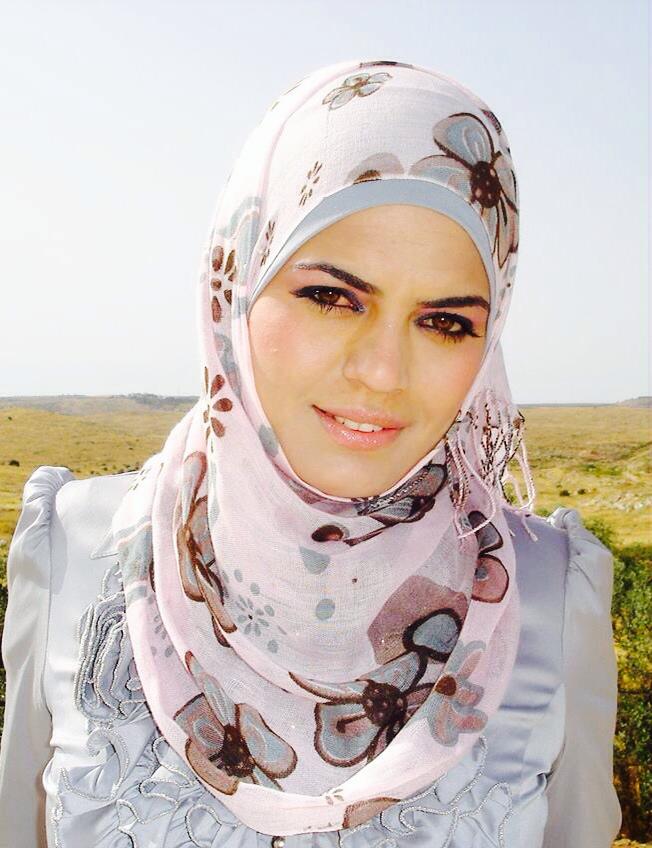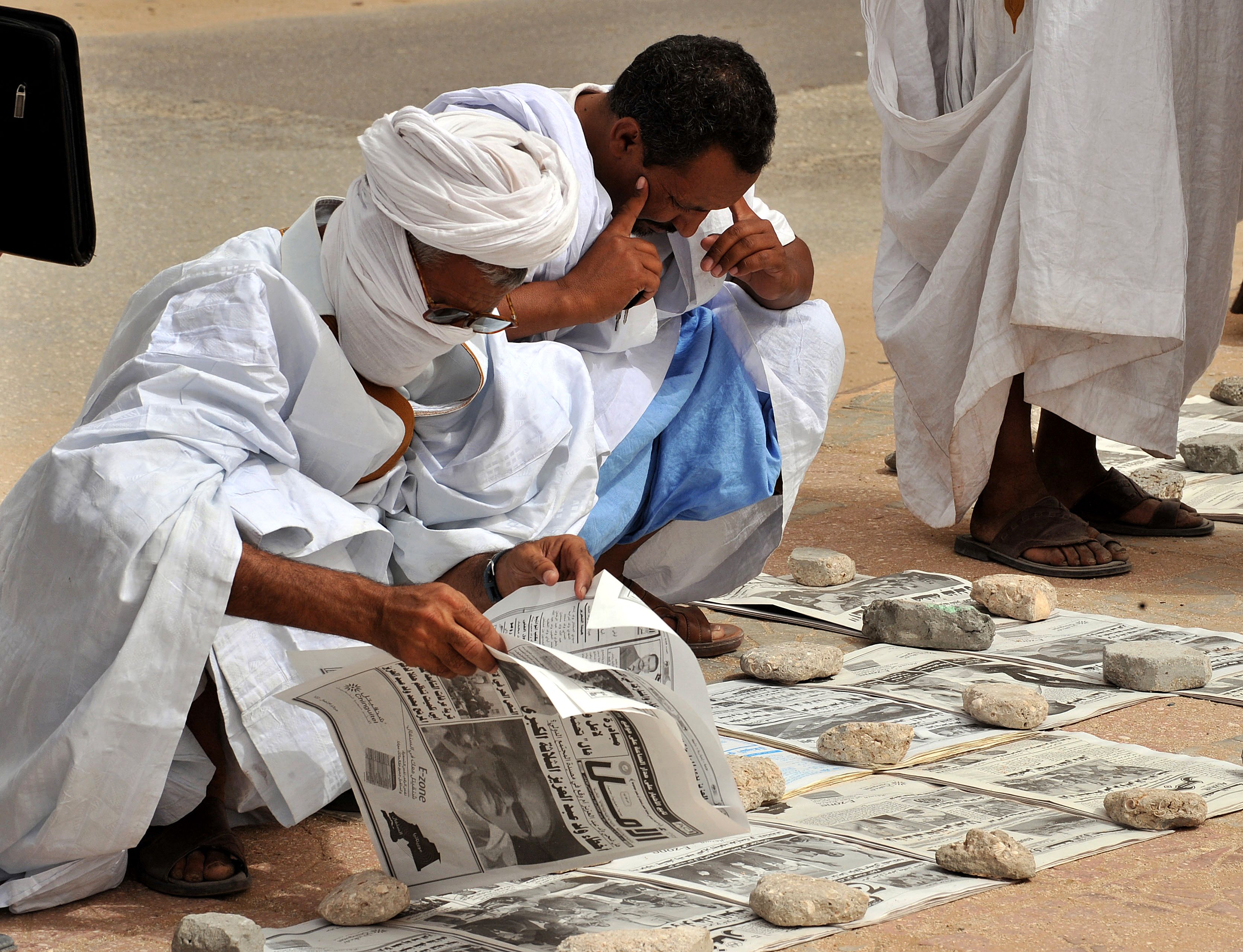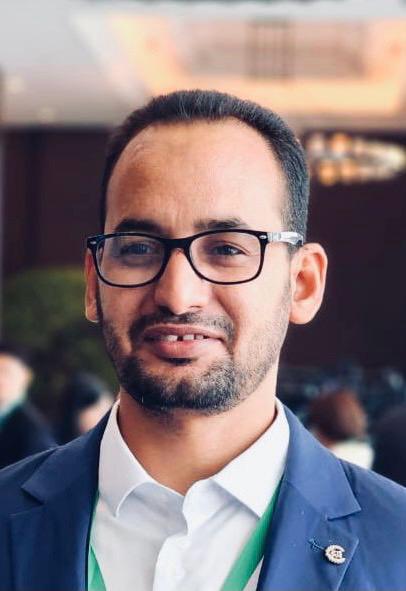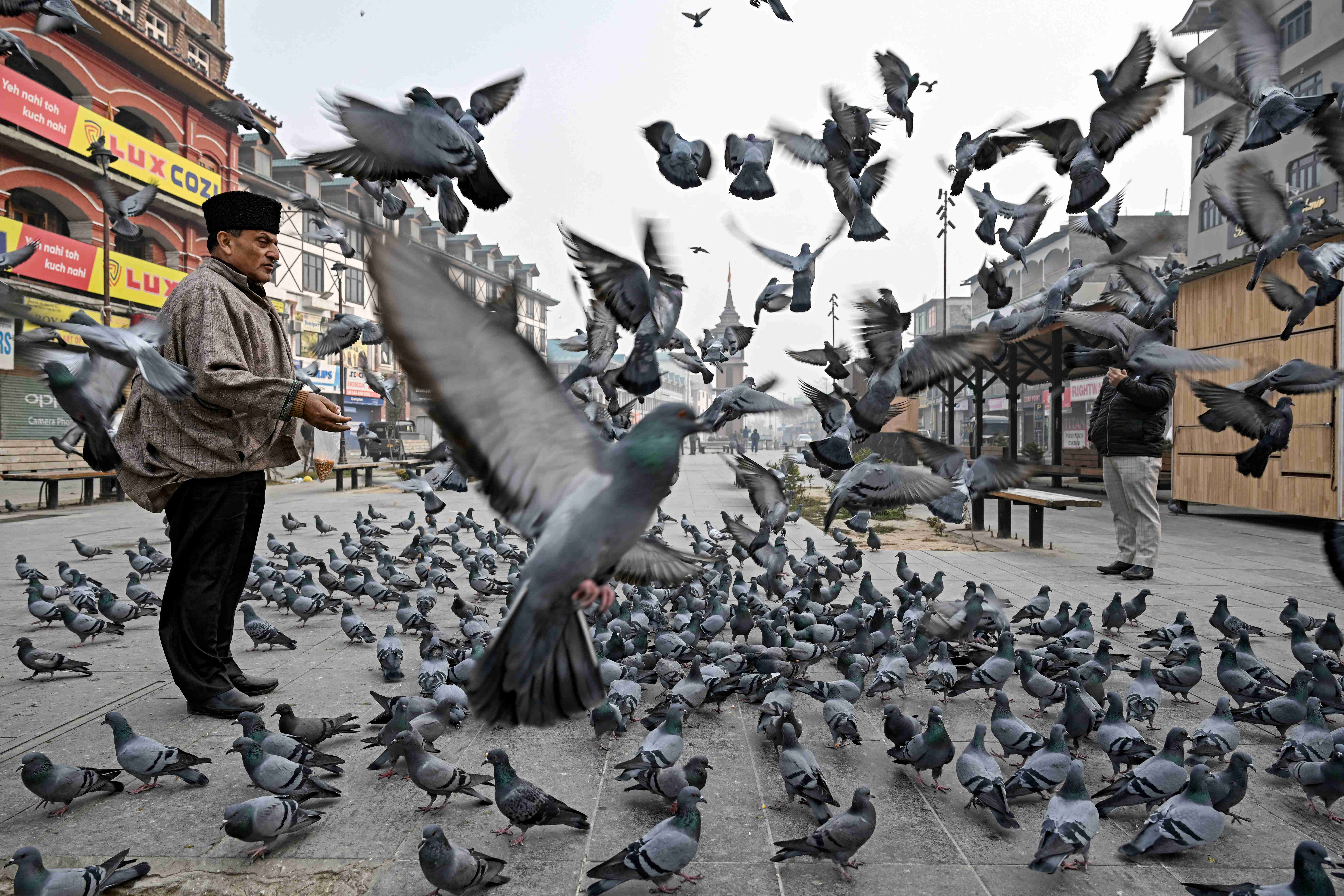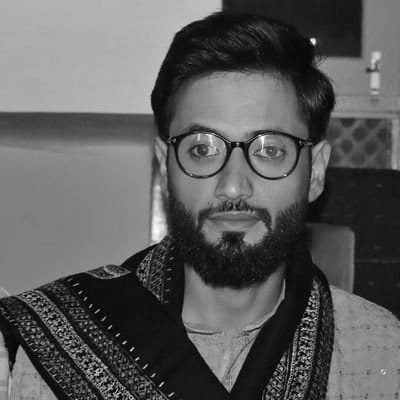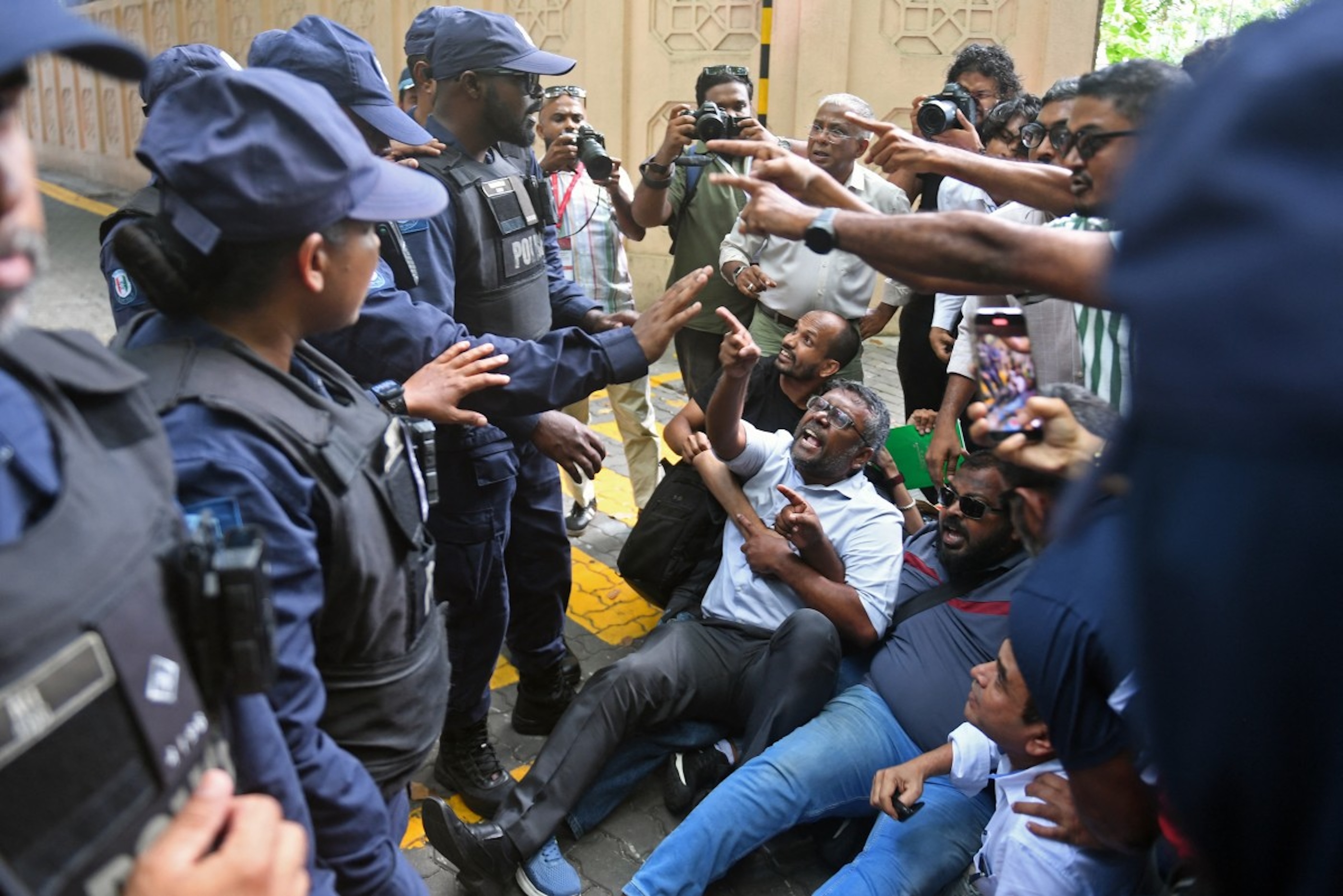لا يمكن الحديث عن الصحافة في فلسطين دون الإشارة لمراسِلات التلفزيون، اللواتي يُسجلن حضورا لافتا على الشاشات العربية وحتى العالمية؛ من خلال إغناء النشرات الإخبارية بالتغطيات الآنية للأحداث، بجرأة وكفاءة عاليتين، حتى تحولت العديد منهن إلى نماذج صحفية يُحتذى بها.
يقينا، إن لخصوصية الوضع السياسي في فلسطين بالغ الأثر في صقل شخصية المراسِلات الفلسطينيات وتميزهن؛ لما وفرته الظروف الصعبة من احتكاك مباشر مع الأحداث المرتبطة بالاحتلال الإسرائيلي. لذلك؛ كان الميدان بالنسبة للصحفيات ساحة حرب وتدريب في آن واحد، فتحولن إلى "مقاومات “سلاحهن الكلمة والميكروفون، لنقل صورة الوضع في فلسطين، برغم كل الأخطار التي تُحيط بهن والتحديات التي يعشنها خلف الكاميرا.
نسعى في هذا التقرير للاطلاع على الظروف التي تعمل بها مراسلات التلفزيون في فلسطين والجوانب الخفية من حياتهن المهنية التي يجهلها المشاهدون. فبينما تنشط المراسِلات في نقل القصص الإخبارية والإنسانية للجماهير، فإنهن ينسين قصصهن الخاصة خلف الشاشة. ومن موقعي بصفتي مراسلة تلفزيونية سابقة عايشتُ العديد من ظروف زميلاتي في فلسطين، وجدتُ أنه لا بد من تعريف القراء على بعض الجوانب من قصصهن غير المحكية.
نجومية مغمسة بالمعاناة
في البداية، تمثل فترة التسعينيات أول عهد لظهور المراسلات التلفزيونيات في فلسطين، كان ذلك بالتزامن مع توقيع اتفاق أوسلو بين منظمة التحرير الفلسطينية ودولة الاحتلال الإسرائيلي عام 1993، وإنشاء هيئة الإذاعة والتلفزيون الفلسطينية، وترخيص عدد من محطات التلفزة والإذاعات المحلية؛ إذ بدأت العديد من خريجات الصحافة وتخصصات أخرى العمل في تلك المحطات بصفتهن مراسلات ومذيعات، قبل الانتقال للفضاء الأوسع (الشاشة العربية والعالمية). أما المحطة الأبرز لظهور المراسلات، فكانت في انتفاضة الأقصى الثانية العام 2000، حيث سطع نجم العديد من المراسلات في أكثر المناطق العربية سخونة.
ليلى عودة تُعد واحدة من أقدم المراسلات الفلسطينيات، بدأت عملها الميداني في العام 1993 مراسلةً لتلفزيون أبو ظبي، قبل أن يتحول لفضائية لاحقا. ومع الانتفاضة الثانية، لمع اسم ليلى في عالم التلفزيون؛ إذ تميزت في تغطياتها الصحفية الجريئة من قلب الحدث. وبرغم تفوق ليلى على الشاشة وحصولها على وسام الشيخ زايد لشخصية العام 2001 ضمن جائزة الصحافة العربية؛ لدورها في تلك الفترة، إلاّ أنها واجهت بعض التحديات خلال عملها الميداني. تقول ليلى: "في أحد الأيام، عدت للمنزل متأخرة بسبب تأخر الأحداث التي كنت أتابعها، حينئذ طلب مني والدي وقف عملي فورا؛ فقد كانت لوالدي محاذيره الاجتماعية التي ترفض عمل الأنثى في الميدان ولساعات طويلة، على الرغم من أنه من طبقة المثقفين، ولم يعدل والدي عن موقفه إلا بإقناع مني ومن والدتي".
وبرغم تغير نظرة والدها لعملها لاحقا واقتناعه بما يتطلبه العمل الميداني من وقت وجهد، خاصة وقت الحرب، إلا أن ليلى واجهت تحديات أكثر صعوبة، تمثلت بخطورة الوضع أمنيا خلال التغطيات الميدانية؛ إذ أُصيبت في إحدى المرات برصاصة إسرائيلية وهي تنقل صور الدمار والقصف في قطاع غزة. وبرغم مرور نحو 20 عاما على تلك الحادثة، إلا أن خطر الاحتلال ما زال يمثل أهم التحديات التي تواجهها ليلى في عملها الصحفي الميداني.
شيرين أبو عاقلة، مراسلة لقناة الجزيرة منذ عام 1997، تُعد من أهم النماذج الإعلامية التي سطع نجمها في الانتفاضة أيضا. عملت شيرين في بداية مشوارها الصحفي مذيعة ومقدمة برامج في إذاعة صوت فلسطين قبل الانتقال للجزيرة. تعود شيرين بالذاكرة لبدايات عملها الصحفي، وتحدثنا عن الصعوبات التي كانت تعيشها لأجل إيصال الصوت الفلسطيني للعالم. وقتئذ، كانت أبو عاقلة تعمل بإمكانيات ضعيفة، وأجهزة ثقيلة يصعب الحركة والتنقل معها في أرض ملغومة بالاجتياحات الإسرائيلية وعمليات القصف والتصفية والاغتيال للمقاومين الفلسطينيين.
تقول شيرين: "كنا نعتمد على الصورة التي نأخذها في مناطق خطيرة، ثم ننقلها في ظروف الاجتياحات والإغلاقات إلى مكتبنا لتوضيبها، قبل بثها عبر أجهزة صعبة وثقيلة لقناة الجزيرة. اليوم تغير المشهد وصارت لدينا سيارات للبث وأجهزة بث صغيرة نحملها معنا أينما ذهبنا".
وتضيء شيرين على جانب آخر من ظروف حياتها الصحفية التي يجهلها متابعوها، تتعلق باضطرارها وغيرها من المراسلات للمبيت خارج منازلهن؛ بسبب سياسة حظر التجول الإسرائيلي على المناطق الفلسطينية. تقول شيرين: "كنا ننام في المكاتب، وفي أحيان كثيرة كان الناس يدعوننا للمبيت في منازلهم، نمت شخصيا في بيوت عديدة في جنين وطولكرم أيام الاجتياحات الإسرائيلية، والتي لم تكن تتوفر بها فنادق في تلك الأيام".
الظروف التي عاشتها ليلى وشيرين تبدو مألوفة لنسرين سلمي التي تعمل حاليا مراسلة لقناة الميادين من الضفة الغربية. بدأت نسرين عملها من محطة تلفزيون محلية، وتنقلت بين العديد من المحطات قبل الانتقال لقناة إل بي سي اللبنانية أثناء الانتفاضة، ومنها سطع نجمها. تتحدث سلمي عن ظروف قاهرة عاشتها خلال الانتفاضة كي توصل الصورة والخبر من أرض الميدان. من الذكريات العالقة في ذهن نسرين، اضطرارها للنوم 40 يوما متواصلة في المكتب في ظروف صعبة للغاية؛ بسبب فرض سلطات الاحتلال الإسرائيلي حظر التجوال على مدينة رام الله آنذاك.
لكن ما كان يخفف عليها تلك الظروف، أنها كانت تتلقى الدعم من الناس ورجال المقاومة على حد سواء. تقول نسرين: "كنا صحفيات قليلات العدد في تلك الفترة، لكننا محظوظات، كل من حولنا يدعمنا ويساعدنا، كان رجال المقاومة يوفرون لنا نوعا من الحماية من خلال توجيهنا للمناطق الآمنة والبعيدة عن الاشتباكات، كما كان يعرض علينا الناس بيوتهم للنوم والراحة وغسل ثيابنا".
الميدان... مدرسة وخبرة
تتشاطر المراسلات الثلاث الرأي بأن الواقع السياسي الساخن في فلسطين يشكل عاملا رئيسا في خلق صحفيات متميزات؛ فالتغطيات الميدانية في نقاط الاشتباك والتوتر تسهم في صقل شخصية المراسلة الفلسطينية ومنحها هامشا من الجرأة والإقدام في الميدان دون خوف أو تردد، في أوقات السلم والحرب على حد سواء. وهو ما فتح الباب أمامهن للعمل مع أهم المؤسسات الإعلامية، وأتاح لهن الفرصة لتمثيل القنوات التي يعملن لديها في الخارج وفي ميادين جديدة. على سبيل المثال، تنقلت أبو عاقلة بين العديد من الدول لتقديم تغطيات للجزيرة في الولايات المتحدة الأمريكية وبريطانيا وتركيا وغيرها. لم يكن ذلك ليحدث لولا الكفاءة المهنية والقدرة على التعامل مع الظروف كافة، وهي كفاءة اكتسبتها من عملها الميداني في فلسطين.
سلام هنداوي وآمال مرار برزتا في عالم التلفزيون بعد سنوات الانتفاضة، لكنهما تعتبران أن الميدان هو المدرسة الصحفية التي تعلمتا منها؛ فمعايشة الأوضاع الصعبة على الأرض والاحتكاك المباشر بها أسهمت في صقل شخصيتيهما وإثبات نفسيهما في عالم الصحافة. فمثلا، كان لتجربة الميدان في فلسطين دور في بزوغ نجم سلام بصفتها مراسلة في مناطق الحروب والتوتر خلال الثورات العربية، قبل أن تتحول إلى العمل الاستقصائي في المناطق الساخنة، حيث تقدم الآن برنامجها الاستقصائي "المسافة صفر" على شاشة الجزيرة.
تعترف سلام أنه بفعل تلك الخبرة كانت من أولى المراسلات اللواتي يصلن إلى بعض الدول العربية التي شهدت ثورات شعبية؛ مثل ليبيا وسوريا، لتغطية الأحداث العسكرية فيها. وبينما واجه صحفيون كُثر صعوبات في التغطية من هناك، كان من اللافت عدم تأثر هنداوي بكثير من أحداث الحرب؛ مثل أصوات الانفجارات، وإطلاق النار، أو التجول في شوارع خالية من البشر؛ فهي أمور اعتادتها من ذي قبل وتجاوزتها. تقول سلام: "كل ذلك أساسه تجربتي الميدانية في فلسطين التي أكسبتني قوة وجرأة للوصول للحدث حتى لو كنت الفتاة الوحيدة بالميدان".
تحديات من نوع آخر
إلى جانب تحديات الاحتلال والانقسام السياسي الفلسطيني الداخلي وتأثيرهما على العمل الصحفي، تواجه الصحفيات الفلسطينيات تحديات مجتمعية أخرى كغيرهن من المراسلات العربيات. ولعل أهم هذه التحديات يكمن في عدم تقبل شريحة واسعة من المجتمع لعمل الأنثى في الميدان؛ إذ يُنظر في كثير من الأحيان للإعلام على أنه مهنة للرجال، فيما على الأنثى أن تتجه صوب قطاعات أخرى؛ كالتدريس أو التمريض مثلا؛ لأنها محددة الساعات، على عكس العمل الميداني الذي لا يوجد وقت زمني محدد له. وإن كانت نسرين وليلى تريان بأن النظرة السلبية آخذة بالخفوت بالمقارنة مع الماضي، إلا أن غيرهن يتحدثن عن تعرضهن لنظرات سلبية ومواقف متناقضة. تُخبرنا سلام عن رفض البعض إجراء مقابلات معها لأنها أنثى، بل وصل الأمر إلى حد وصفها بـ "المسترجلة"! تقول سلام: "لم يحبطني ذلك، فأنا صحفية، ومهمتي تكمن في نقل القصة بحرفية ومهنية وليس إثبات نسبة أنوثتي".
وتصف آمال مرار مراسلة قناة الشارقة في مدينة القدس، النظرة المجتمعية للمراسلة بـ "حالة انفصام": "هناك صورة متناقضة نحونا تتراوح ما بين المديح والذم، يحترم الناس شجاعتنا في الميدان، لكنهم في الوقت ذاته يذمون بقاءنا فيه لساعات متأخرة أو اختلاطنا بالرجال". وتعتبر آمال أن أكبر تحد للمراسلة الأنثى يكمن في رفض المجتمع الفلسطيني للمراسلة بصفتها زوجة؛ "لقد واجهتُ من القريب والغريب انتقادات حول عدم الارتباط، لا يدرك هؤلاء أن المشكلة بالطرف الآخر الذي يرفضنا لمهنتنا ويضع أمامنا شروطا أهمها ترك المهنة".
بصفة عامة، تُجمِع المراسلات اللواتي تحدثنا معهن على أن هناك صعوبة في إدراك المجتمع لطبيعة العمل الميداني والثمن الذي تدفعه المراسلات لقاء عملهن لنصرة القضية؛ فمثلا تفتقد الكثير من الصحفيات لحياتهن الاجتماعية ويضطررن للابتعاد عن الأهل والعائلة لفترات غير محدودة خاصة في ظروف الحرب.
تحدثنا هنادي نصر الله، التي كانت تعمل مراسلة لقناة القدس لتسع سنوات، عن الثمن الذي دفعته خلال عملها الصحفي؛ فمثلا لم تتمكن هنادي من حضور مراسم زفاف اثنين من أشقائها بسبب انشغالها في التغطيات الصحفية، لا سيما في فترات الحرب على غزة. ومن أصعب ما واجهته في تغطيتها الصحفية لثلاث حروب على القطاع، كان تعرض منزل عائلتها للقصف خلال حرب 2014، ما أدى إلى تشتت أفراد العائلة. تقول هنادي: "قضيت آخر أسبوعين من الحرب متنقلة ما بين المبيت في بيوت صديقاتي وبيت شقيقتي، كل ذلك كان حافزا لي لأستمر في تغطيتي الإعلامية؛ فنحن نؤدي واجبا وطنيا ومهنيا يبقى أقوى من أي واجب آخر".
وهكذا، تواصل المراسلات الفلسطينيات عملهن بكل كفاءة وجرأة وصبر؛ فالصحافة بالنسبة لهن ليست مهنة وحسب، بل رسالة ومقاومة وحكاية شعب لا بد أن تُروى مهما بلغت التحديات. وليس من المبالغة القول إن كل مراسلة ميدانية في فلسطين تحتفظ بسجل مهني وخبرة تُدرَّس. هنا، أذكر موقفا حصل معي خلال تدريب صحفي مع وكالة رويترز في لندن، صيف 2014. بعد عرض أحد تقاريري، وقف المدرب مصفقا لي، ثم قال: " لدي 27 عاما من الخبرة الصحفية، ولم أنجز مثل هذا التقرير". كان تقريري حول اعتداء الجيش الإسرائيلي على مسيرة للصحفيين عند أحد الحواجز العسكرية. يومئذ، تم الاعتداء علي بالضرب واستهدفني الجنود بقنبلة غازية أثناء تسجيل "ستاند أب"، مع ذلك واصلت رسالتي للكاميرا. بالنسبة لي، كان تقريرا عاديا، قد يكون ذلك لاعتيادي على المشهد ومعايشته مرارا في فلسطين، لكنه بالنسبة للمدرب والمشاركين كان تقريرا في قمة الجرأة.

